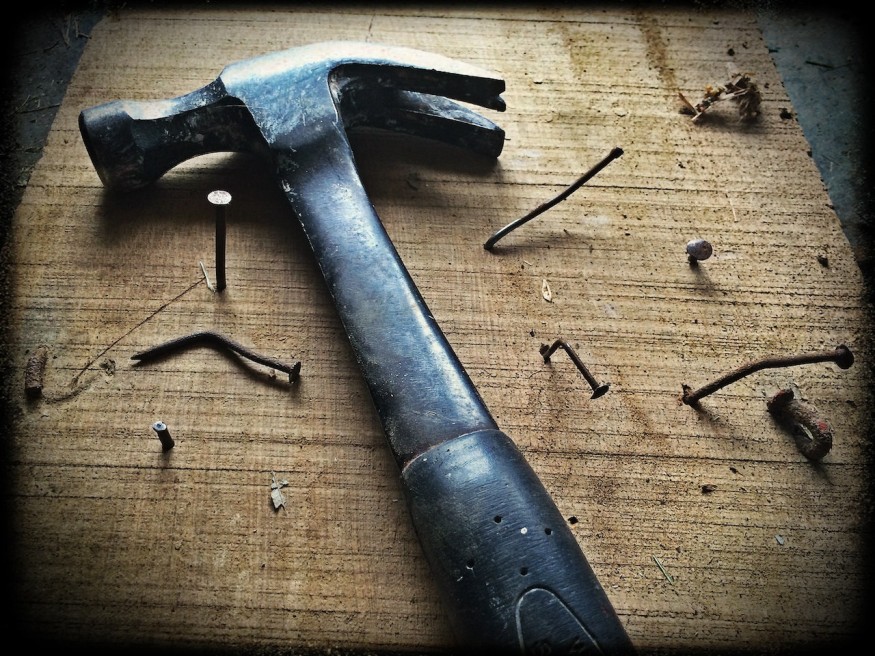
A 2,000-year-old tomb was found in Turkey with dead nails sprinkled all over it. On top of this, it was also rigidly sealed off with bricks and plaster.
Unusual 2,000-Year-Old Tomb
According to Live Science, during the Roman era, individuals may have harbored fear for the restless dead. This is based on the discovery of a cremation tomb with intentionally bent nails scattered over it and that was sealed with a plaster layer and two dozen bricks. Findings were published in the Antiquity journal.
The unusual tomb was found at the Sagalassos site in southwestern Turkey. It reportedly dates back to 100-150 A.D.
By the cremation pyre's edges, 41 twisted and bent nails were scattered. Other than that, there were also 24 brick pieces that were carefully placed on the pyre and topped with a lime plaster layer.
The individual inside the tomb, who was identified as an adult male, was buried and cremated in the same area, which was quite unusual to practice during the Roman era.
The Sagalassos site used to be occupied from 500 B.C. up to 1300 A.D. It showcases various examples of architecture from the Roman era. A project dedicated to it, the Sagalassos Archaeological Research Project, involved excavations and the study of burials in the outskirts. These included non-normative cremation as well. Usually, cremations from Roman times had a pyre that was followed by cremation collections. These remains were stored in an urn, buried in a tomb, or placed inside a mausoleum.
However, the Sagalassos' cremation was done in place. This was something the researchers observed based on the bone's anatomical positioning.
What made things even more odd was the difference between the tomb's closure and the grave's goods. The researchers found various funeral items, including a coin, food remains, woven basket fragments, and glass vessels.
Johan Claeys, who is the study's first author and an archaeologist from the Catholic University of Leuven (KU Leuven), says that the presence of these funeral items shows that appropriate aplomb was present when the deceased was buried.
Fear of Restless Dead
Johan Claeys mentioned to Live Science that the burial site was sealed in three different ways that can be interpreted as attempts to protect the living from the restless dead, or vice versa.
While each practice (in-place cremation, plaster or tile coverings, and occasionally twisted nails) is known to be conducted in cemeteries during those times, mixing all three together has not been observed before. It implies that the people had fear of restless dead.
Marco Milella, who is a research fellow at the University of Bern's Institute of Forensic Medicine and was not part of the study, told Live Science that he agreed with the conclusion the researchers had come to regarding the bent nails. These items are typically found across cemeteries in Western Europe that date to 100 to 200 A.D.
Milella notes that the remains' sealing is also quite tantalizing and interesting, considering their possible link with the nails. Fear of restless dead is a possible explanation for such an occurrence. However, they could have also served as amulets to protect the dead. Both cases may also have been true.
Claeys thinks that the strange cremation of the man could have taken several days of preparation and execution. The belief system that may have urged the individuals back then to bury the man in such a way is best understood as magic of some sort or as an act that was meant to have specific impacts due to supernatural links.
There is a possibility that the unusual burial was done to counteract an unnatural or unusual death. However, the specialists did not find any evidence of disease or trauma.
The researchers concluded that, regardless of whether the man died due to trauma or a contagious condition, the living seemed to have been scared of the return of the deceased.
RELATED ARTICLE : Cleopatra's Tomb Found? 4,800 Feet Tunnel of Rock May Lead to Remains of Egypt's Last Pharaoh and Lover Mark Antony
Read also: Archaeology
© 2025 ScienceTimes.com All rights reserved. Do not reproduce without permission. The window to the world of Science Times.










